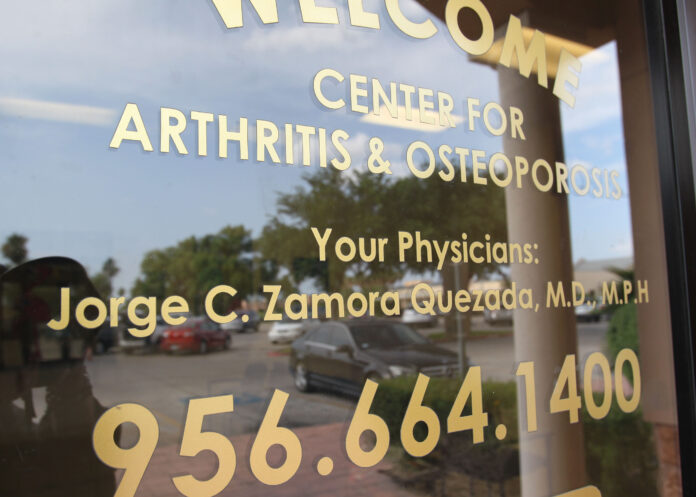
A federal judge has given the OK for a doctor convicted of healthcare fraud to have access to electronic devices, including a laptop, while he awaits sentencing at the East Hidalgo Detention Center in La Villa.

On Jan. 15, 2020, a jury found Dr. Jorge Zamora-Quezada guilty of spearheading a $325 million healthcare fraud scheme by falsely diagnosing patients with rheumatoid arthritis and then treating them with expensive and unnecessary medications.
After his May 2018 arrest, Zamora-Quezada was ordered to remain in custody at the La Villa prison pending trial. And once the verdict came down at the start of 2020, it was there he was ordered to remain until sentencing.
But, just as his trial became a nearly month-long thing of complexity, the process to determine Zamora-Quezada’s punishment has become equally complex. Two-and-a-half years after being found guilty, the doctor has yet to be sentenced.
And now that day may be even further away after Zamora-Quezada has been granted the ability to access electronic devices while at the jail so he can better prepare for his rebuttal against the government’s sentencing recommendations.
The decision came down during a hearing before U.S. District Judge Ricardo H. Hinojosa on Friday.
Hinojosa approved Zamora-Quezada’s request, but advised that he and his attorneys work with federal prosecutors to address any potential security issues.
Specifically, Zamora-Quezada asked for access to a laptop computer, a USB drive containing medical records protected by federal law, hardcover books and notebooks “containing case related material.”
The doctor also asked for access to so-called “Brady materials” — evidence in the possession of prosecutors which could be favorable to Zamora-Quezada.
In this case, those materials include the medical billings claims of nearly 14,000 of Zamora-Quezada’s former patients, the majority of whom were covered by Medicare, Medicaid or TRICARE, a federal health insurance for members of the military.
Zamora-Quezada wants access to the patient information and electronic devices because, as the court noted during a hearing this May, the “burden to disprove that the patients were fraudulently diagnosed” falls entirely on him.
Zamora-Quezada argues that the government made its case based on the testimony and records of just a handful of witnesses, but that federal prosecutors are trying to use nearly the entirety of his patient load — tens of thousands of patients — to lend weight to their sentencing recommendations.
The government insists the majority of Zamora-Quezada’s medical practice consisted of fraud — fraud that first came to light after Medicare noticed he was billing at impossible rates — upwards of 100 patients per day.
“The conduct in this case was heinous. Dr. Zamora-Quezada falsely diagnosed vulnerable patients, including the young, elderly, and disabled, with life-long diseases requiring invasive treatments that those patients did not in fact need,” then-Assistant U.S. Attorney General Brian A. Benczkowski said in a statement after the verdict came down.
All the money from those excessive and unnecessary billings went to fund the doctor’s lavish lifestyle, according to prosecutors.
As such, the government is seeking a money judgment of nearly $99.9 million, as well as the forfeiture of the doctor’s assets.
Those assets include money from seven bank accounts, an Eclipse 500 jet, a 2015 Maserati, 13 properties located throughout the U.S. and three in Mexico, among other items.
Zamora-Quezada faces decades in federal prison and hundreds of thousands of dollars in fines that can be levied in addition to whatever money judgment the court may hand down.
The jury found him guilty of one count of conspiracy to commit healthcare fraud, eight counts of healthcare fraud, and one count of conspiracy to obstruct justice.
He faces up to 10 years in prison and up to a $250,000 fine for each of the conspiracy to commit health care fraud and healthcare fraud counts, and up to 20 years in prison for the obstruction charge.




